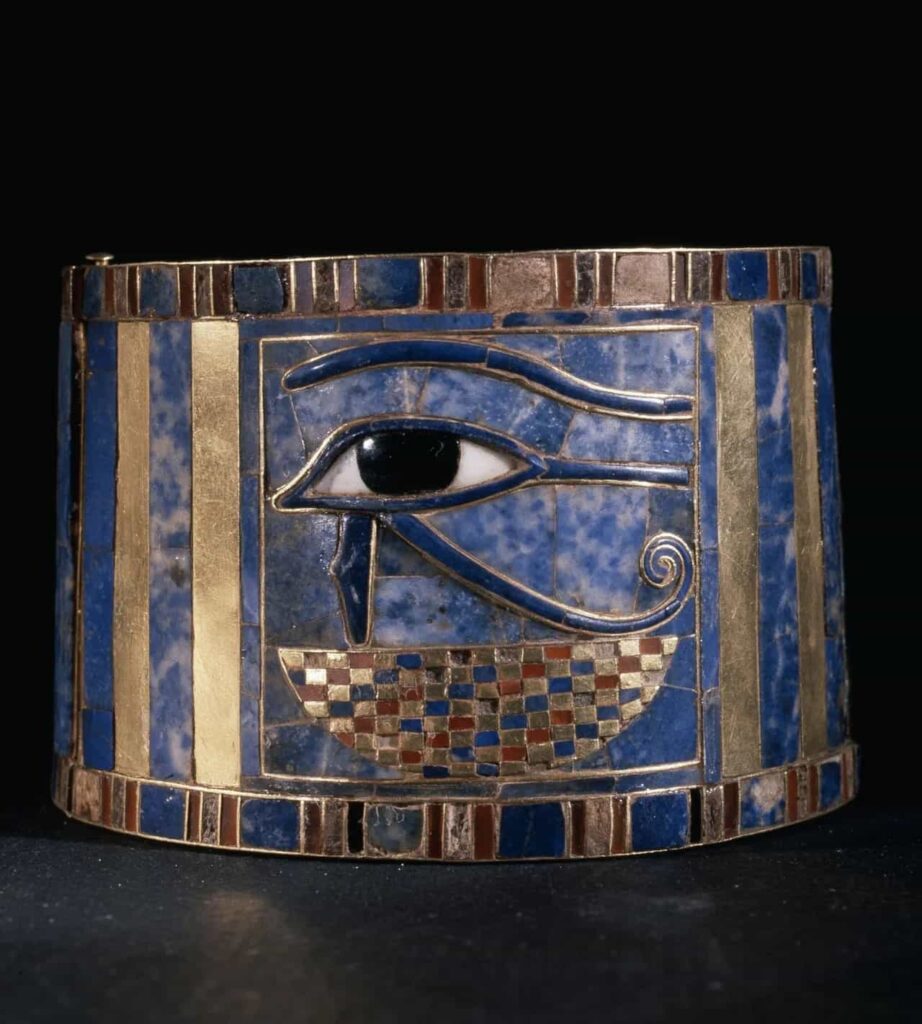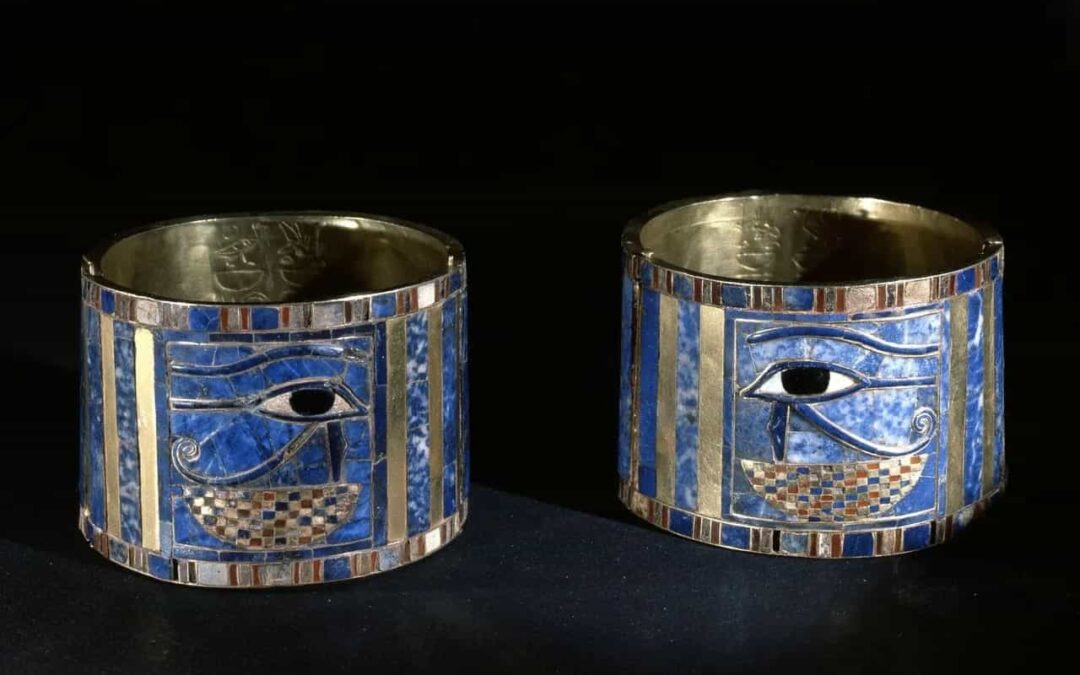Shoshenq II was the third pharaoh of Egypt’s Twenty-second Dynasty, ruling approximately between 887 and 885 BC during the Third Intermediate Period. Unlike many of his contemporaries, Shoshenq II’s final resting place remained untouched by grave robbers.
He was interred in the antechamber of Psusennes I‘s tomb at Tanis, and in 1939, archaeologist Pierre Montet unearthed the tomb, revealing a remarkable collection of royal treasures. Among these finds were a gold funerary mask, a silver falcon-headed sarcophagus, and a variety of amulets and jewelry.
The Bracelets of Shoshenq II
The exquisite twin bracelets discovered on Shoshenq II’s wrists were part of a set of seven identical pieces. These ornate bracelets feature intricate designs that evoke the protection of the king in the afterlife.
The central motif on each bracelet is a wadjet eye (Eye of Horus), a symbol believed to offer eternal protection. Positioned above the hieroglyph for “Neb,” the eye signifies enduring royal security.
Although the bracelets share similar designs, their decorations differ slightly. One bracelet displays the right eye of Re, associated with the sun, while the other depicts the left eye of Horus, linked to the moon. The king’s cartouches are engraved on both pieces, affirming their royal ownership.
The outer surfaces are adorned with vertical bands of gold and lapis lazuli, while rectangular and square inlays of lapis lazuli and carnelian line the edges, forming a decorative border.
Inside each bracelet, engraved cartouches bear the name of Shoshenq I, suggesting that Shoshenq II may have inherited or repurposed some of his predecessor’s jewelry.
Wadjet: The Eye of Horus and Its Protective Powers
The Eye of Horus, also known as Wadjet, meaning “the one who is whole,” is a revered symbol in ancient Egyptian culture. Representing harmony, perfection, and cosmic order, it possesses apotropaic properties, which are believed to be magical, protective, purifying, and healing in nature.
According to myth, Horus, the son of Osiris, sought to avenge his father’s death at the hands of his uncle Seth. This led to a series of intense confrontations between Horus and Seth, during which both suffered numerous wounds.
In one of these battles, Horus’s left eye was severely damaged. Fortunately, Thoth, the god of wisdom and healing, intervened to restore it, replacing the injured eye with the Wadjet, an eye endowed with magical qualities that allowed Horus to regain his vision.
The Eye of Horus is thought to have first been used as a protective amulet when Horus employed its power to resurrect his father, Osiris. Its influence extended beyond that of an ordinary symbol, as it came to be regarded as one of the most potent amulets in ancient Egypt.
The Wadjet was believed to enhance vision, cure eye ailments, shield against the “evil eye,” and offer protection to the deceased on their journey to the afterlife.
In ancient Egyptian tradition, the Eye of Horus served as a talisman symbolizing health, well-being, resilience, and the potential for rebirth.








